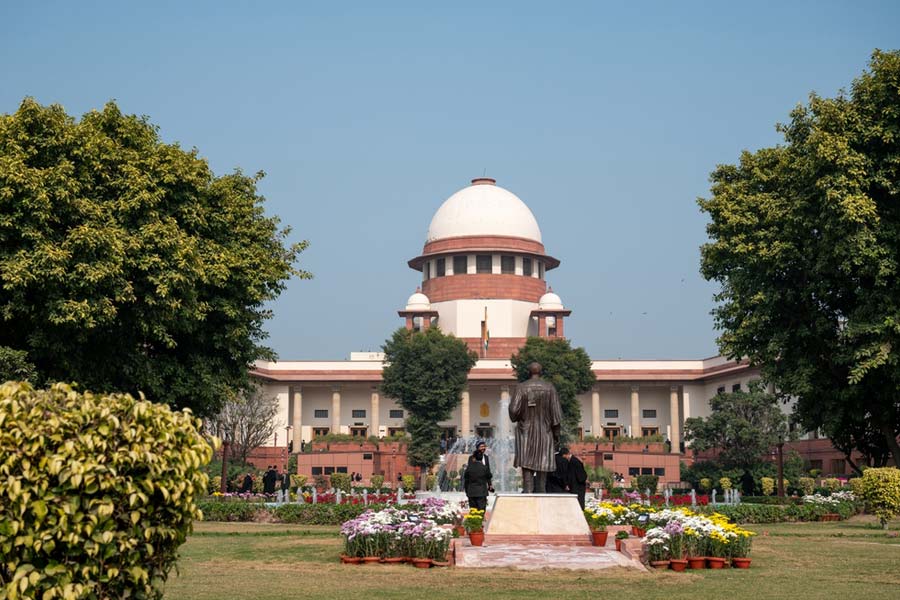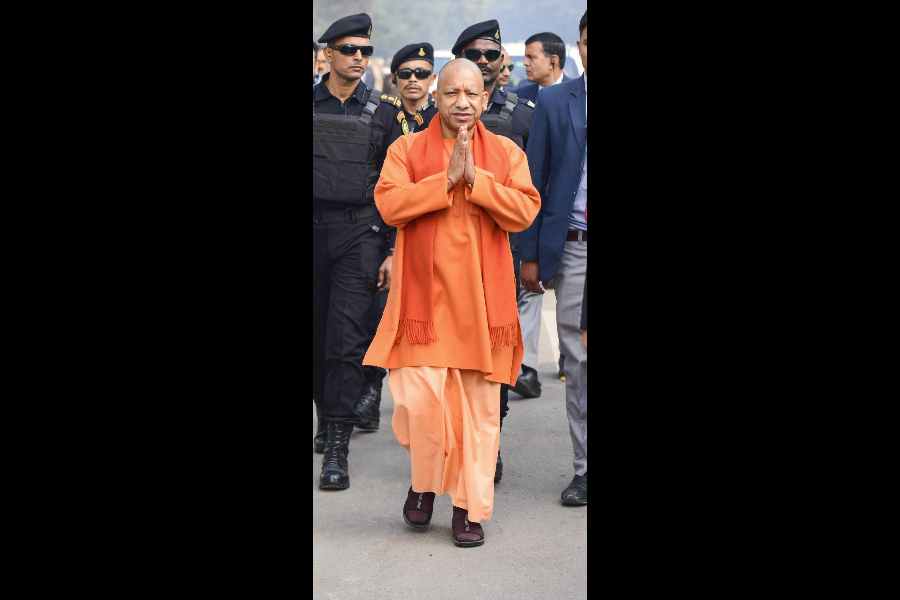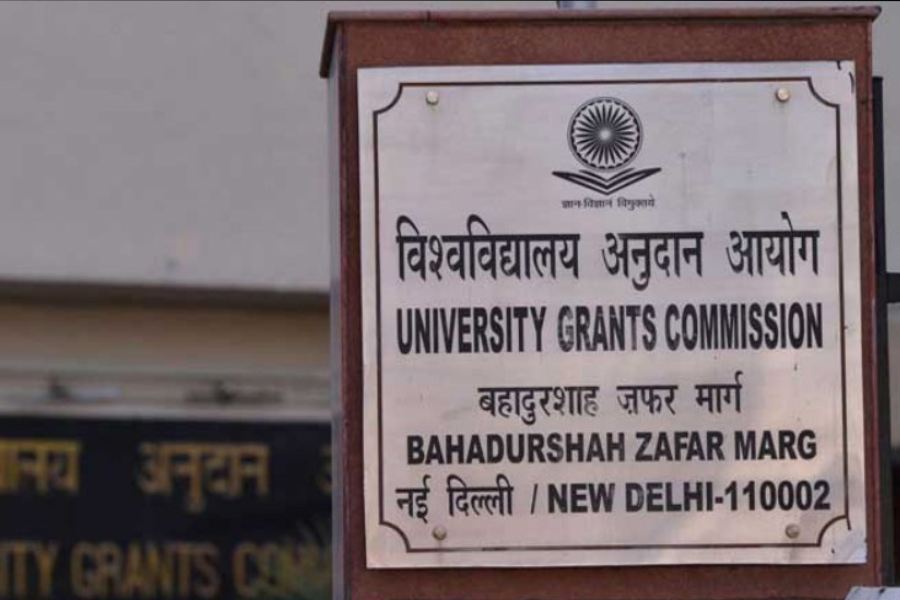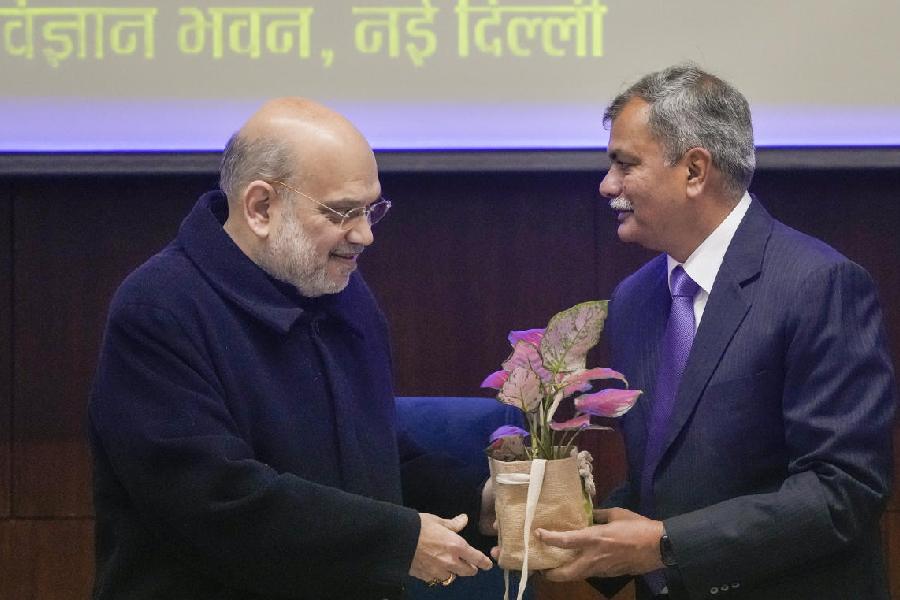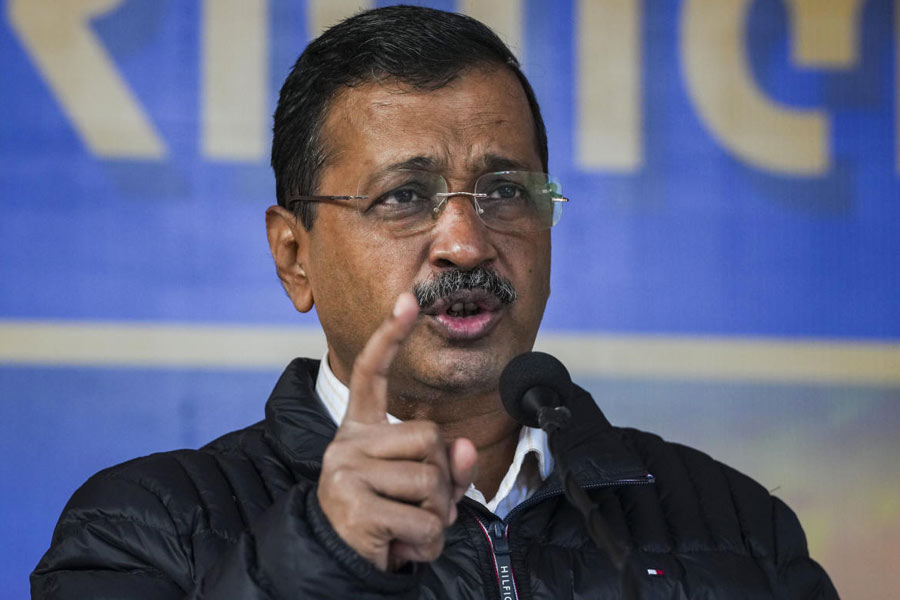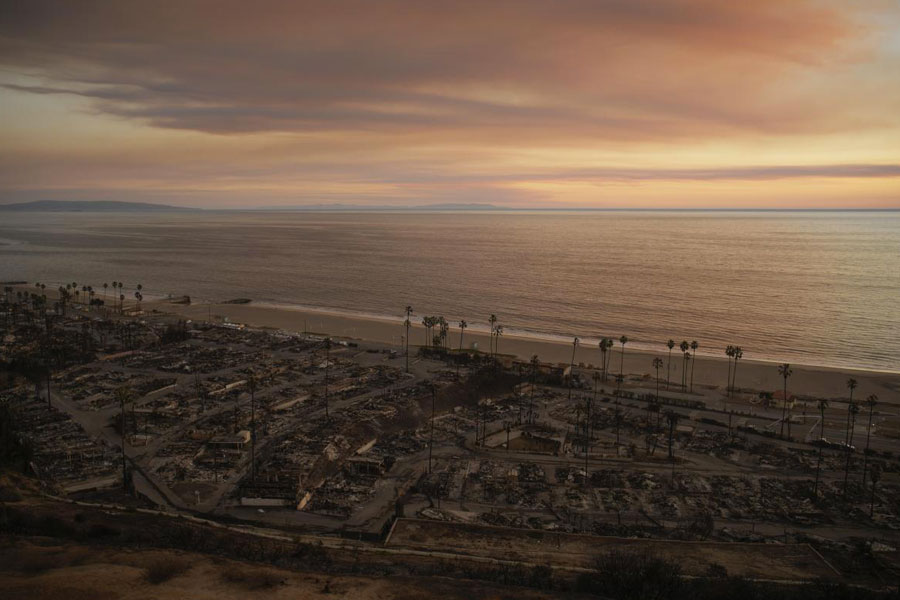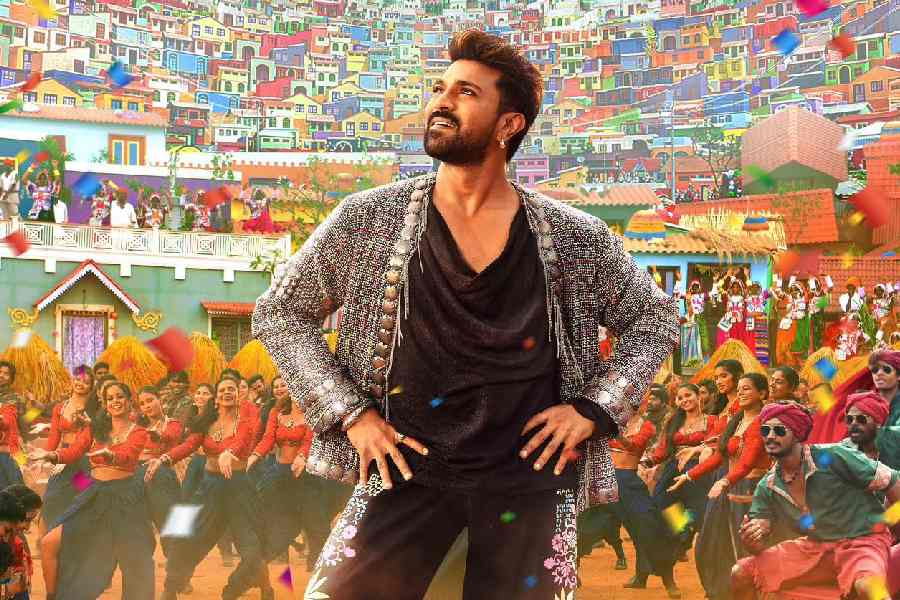After a long period of torpidity and vacuity when it practically disappeared from the national art scene, Calcutta is suddenly experiencing an outburst of creativity that is bound to give contemporary art the push that was long overdue.
Just as the curtains came down on the first edition of the mammoth Bengal Biennale held parallelly in Santiniketan and Calcutta, the Indian Museum, which is celebrating its 210th anniversary, has for the first time ever, on Saturday opened up all its galleries, corridor and courtyard for the display of contemporary art from all over the country. The exhibition titled Dialogues Across Time opened at the Indian Museum on January 11 and continues till March 31.
This face-off between the ancient and the contemporary in a magnificent space that harks back to colonial times has happened earlier here, but not on this massive scale. It would be interesting to see how the huge crowds that visit the museum daily will react to this juxtaposition, “We must continue to do this to draw visitors,” says Arijit Dutta Choudhury, director general, National Council of Science Museums, with additional charge of the Indian Museum.
“Museums are a cultural space today and when Abhishek Basu, trustee of the Basu Foundation for the Arts, and curator Sayantan Maitra approached us to hold this exhibition we agreed. It’s not just about displaying art; it’s about sparking a conversation with the public,” says Sayan Bhattacharya, deputy director, Indian Museum.
Basu Foundation is a not-for-profit organization that promotes and supports innovative work in the field of the visual and performing arts.
Abhishek Basu says “We hope to challenge conventional ideas about how art is experienced and understood.”
Sayantan Maitra says: “Visitors may discover contemporary art work and we are trying to understand out how they react. Students have been trained to find out and different modules have been created for it too. Two hundred works of 100 artists are displayed. We did everything within six months amidst the swirling crowds” To quote the curatorial note: “The primary objective of this exhibition is to create a dynamic and thought-provoking dialogue between the museum’s historical collections and contemporary artistic expressions…encouraging visitors to reconsider the role of museums in shaping cultural narratives.”
As one enters the Indian Museum one is confronted by a Yaksha and Yakshi, the Kalpadrum (wish-fulfilling tree) and the Lion Capital from Rampurwa. Now visitors will find Subodh Gupta’s red cow as well. In the magnificent Bharhut Gallery are displayed Alwar Balasubramanium’s two self-portraits in vanishing camphor and sand. Bharti Kher has on show a diptych of two concentric circles composed of sperm-shaped bindis.
In the archaeological gallery, stands M. Pravat’s columns of bricks with the impression of maps and bricks. A ten-armed Chhau dancer in red walked in inspecting the array of deities and other antiquities. Poppy flowers by Wolf of Jaipur has sprouted in the coin gallery as a symbol of exchange.
The metallic sheen of Alex Davis’s November Burst with its giant blooms in one corner of the courtyard catches the eye immediately. Chanakya School of Craft trains 2,000 women in stone carving. Its take on the image of Sun was chiselled from stone. In another corner of the courtyard is Vyom’s sculpture characterized by swells and torsions. In the ecology gallery, the realistic paintings of tigers are by the residents of Sawai Madhopur.
On the first floor, in the corridor with the statue of a young Queen Victoria, are photographer Dayanita Singh’s black and white prints of Zakir Hussain. In front of the Bengal School works are displayed Prashanta Sahu’s vegetal sculptures, and further down are Bose Krishnamachari’s Braille texts behind a sheet of glass, obstructing its tactility.
The Crafts and Textile gallery has some wonderful contemporary works, set amidst the museum’s priceless collection. Vivek Vilasani’s women in black chadors recreating Leonardo Da Vinci’s Last Supper painting takes on a powerful symbolism in the context of the bloodbath in Gaza. There are some beautiful fabric based works by Sakshi Gupta here. Some of the notable works are Prabhakar Pachpute’s wooden arms and M.F. Husain’s misty watercolour. Debashish Paul’s synthetic zari costumes made of rejects and cowrie shimmered.
Manish Pushkale’s accordion like installation with its intricate calligraphy resonated with the lost voice of an extinct tongue. Jagannath Panda’s huge head of a crow stared at visitors in the Insect Gallery. The fragility of Bhasha Chakrabarti’s Skin to Skin contrasted the pickled exhibits of the Zoological gallery.
Tasneem Mehta, managing trustee and director of Dr Bhau Daji Lad Museum, Mumbai, who was in Calcutta for the Bengal Biennale, and who had first exhibited Jitish Kallat’s work amidst the museum exhibits, commented over the phone: “Calcutta fell from the charts, now it seems to be climbing back again.”


